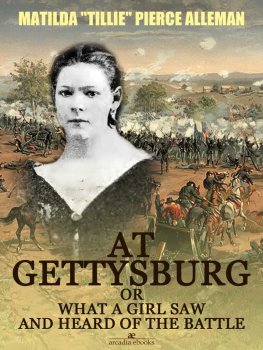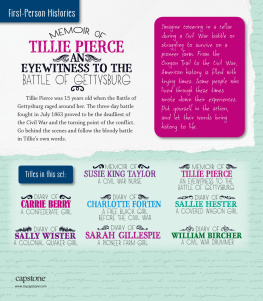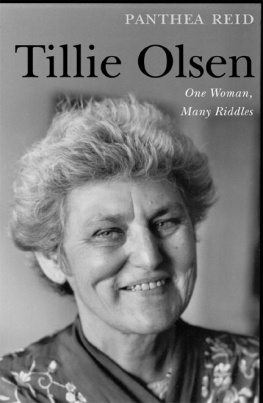PREFACE
In some locations in these United States, notably Kansas and Oklahoma, it is possible to accurately restore and reconstruct past exploits of Indian Tribes, from objects and other evidences left behind.
A few authentic, definite dates found here and there, pertaining to certain happenings, give us living shadows of two great Osage Chiefs.
In telling of these two great leaders, no limitation is necessary, since only small sketches, items and notes are found in divers records and reports.
An old history of Montgomery County, Kansas, By its Own People, published by L. Wallace Duncan in 1903, says:
Coffeyville-Old Town. About the time the Talley Springs townsite was being platted or a little later, Col. Coffey, N. B. Blanton, Ed Fagan, John Clarkson and Wm. Wilson formed a Company and laid out a town around Col. Coffeys trading post, previously established for the purpose of trading with the Black Dog band of Osages who then had their little village south of Onion Creek on the site subsequently appropriated by Ben Chouteau and still known as the Chouteau Place.
In another place, this history mentions the Drum Creek Treaty, which was signed by the X mark of 106 Chiefs, Counselors and Braves of the Big and Little Osage tribes. Indians signing the document who were known by many Montgomery County pioneers were Black Dog , Little Beaver, Nopawalla, Strike Axe, Wyohake, Chetopah, Hard Rope, Watsanka and Melotumuni (Twelve Oclock).
A letter from one who was at the signing relates: Black Dog, one of the little Osage Chiefs, held out and refused to sign the treatyleaving the council in a sulking manner; later when he found it was going through, he was anxious to sign it.
In tracing the life of Black Dog, the Second, who signed the Drum Creek Treaty, there came into being the form of his father, Chief Black Dog, the First, who had been a dominant character and perhaps the most outstanding of Osage Chiefs. He was a man of unusual ability, was seven feet tall, weighed three hundred pounds and was blind in his left eye. He had met most of the notables of his day, had married but one wife and had but one childBlack Dog, the Second.
Piece by piece through histories, libraries and living people, the life of Black Dog has been traced. Heretofore, no biographer has undertaken the assembling and reconciling of dates and material into a narrative long enough to do justice to Manka-Chonkeh (Black Dog) and his son, Black Dog, the Second.
It was the first Chief Black Dog who conceived and engineered the Black Dog Trail for hunting and mourning parties. It was he who directed the building of a race track for young braves to develop speed in running and other athletics. And it was he who understood the significance of the Mottled Eagle (Ho n -ga) from which he descended.
During his life time, he led the Osages courageously and unselfishly through disasters and trying events into worthwhile undertakings and happy surroundings.
The second Chief Black Dog, upon the death of his father, fell heir to leadership and much trouble, in the beginning. However, he was resourceful with foresight and decision, and was able during the Civil War and the turn of the century to guide his people into greener pastures than those frequently noted by historians. He encountered many difficulties, temptations and disappointments; he left no male descendant to carry on the prized name of Black Dog.
He lived until 1910, long enough to lend his influence with the Osage Nation towards making an oil and gas lease on a million and a half acres of their land, and by this counsel helped his people to become the wealthiest of all Indian tribes.
Grateful acknowledgments are hereby made to Herman Kahn, Chief Archivist of the Interior National Archives at Washington, D.C., for photostatic copies of five letters; the Newberry Library, Chicago; George A. Root, Archivist of the Kansas Historical Society, Topeka; Mrs. Tilden, Librarian of the United States Indian Agency, Chicago, for use of their library; T. B. Hall, Superintendent, Osage Indian Agency, Pawhuska, Oklahoma; Martin Weisendanger, Curator of Gilcrease Foundation, in Black Dog Township, Tulsa, Oklahoma; W. W. Graves, Historian, St. Paul, Kansas; Miss Mary Carnahan, Librarian, Pawhuska Public Library; Miss Edith Norton, Librarian, Coffeyville, Kansas; Mrs. H. L. Campbell for unpublished material pertaining to the Osages; and to those who so generously shared their knowledge, Lee F. Harkins, Betsy Bittman, Fred Gentner Drummond, Bessie Fink, Fannie Brownlee Misch, as well as Mrs. Kate Barker and Mrs. Nettie McCarthy, daughters of Chief Black Dog, the second.
The main purpose of this book is to locate definitely the Black Dog Trail which heretofore has been unpublished; to present these two Osage leaders in their original setting; and to show that while both were illiterate, their natural wits and slow angers gave them sufficient wisdom and understanding for the problems of their people.
Their leadership compares favorably with that of any race, and the achievements of these native Americans should remain forever an inspiration to the succeeding generations of all peoples.
Tillie Karns Newman












